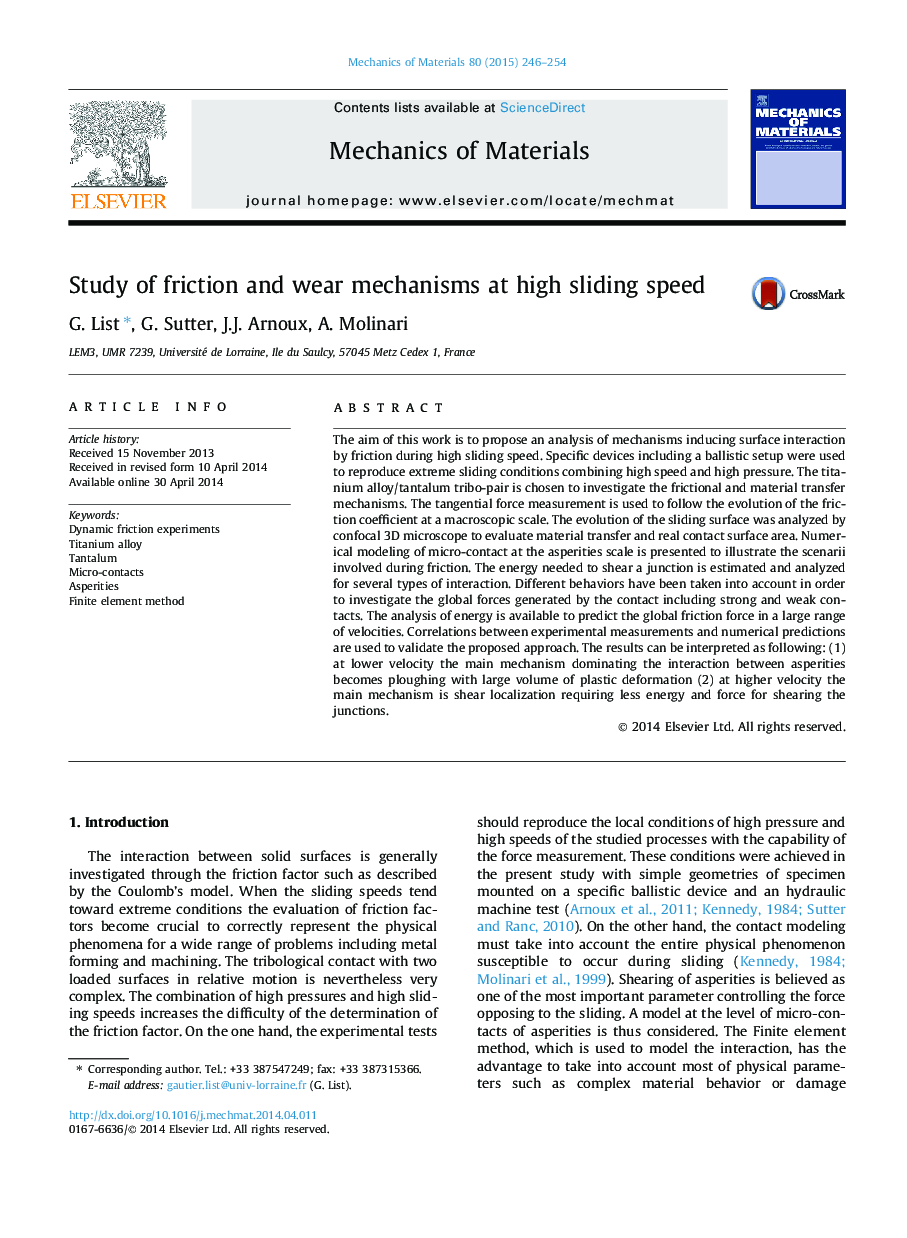| Article ID | Journal | Published Year | Pages | File Type |
|---|---|---|---|---|
| 800270 | Mechanics of Materials | 2015 | 9 Pages |
The aim of this work is to propose an analysis of mechanisms inducing surface interaction by friction during high sliding speed. Specific devices including a ballistic setup were used to reproduce extreme sliding conditions combining high speed and high pressure. The titanium alloy/tantalum tribo-pair is chosen to investigate the frictional and material transfer mechanisms. The tangential force measurement is used to follow the evolution of the friction coefficient at a macroscopic scale. The evolution of the sliding surface was analyzed by confocal 3D microscope to evaluate material transfer and real contact surface area. Numerical modeling of micro-contact at the asperities scale is presented to illustrate the scenarii involved during friction. The energy needed to shear a junction is estimated and analyzed for several types of interaction. Different behaviors have been taken into account in order to investigate the global forces generated by the contact including strong and weak contacts. The analysis of energy is available to predict the global friction force in a large range of velocities. Correlations between experimental measurements and numerical predictions are used to validate the proposed approach. The results can be interpreted as following: (1) at lower velocity the main mechanism dominating the interaction between asperities becomes ploughing with large volume of plastic deformation (2) at higher velocity the main mechanism is shear localization requiring less energy and force for shearing the junctions.
